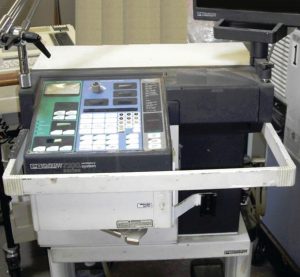A Brief History of Control and Spontaneous Modes
Begin your exploration of the history of modes with a refresher on the emergence of ventilation and some key innovations that we have already touched on in Chapter 2. Watch “How do Ventilators Work?” by TED-Ed, and then we will focus on ventilator modes:
If you require a transcript for this video, please click Watch on YouTube to view the video source. Then, you can access the written transcript from this page.
The first version of the modern ventilation modes was a mode known as Continuous Mandatory Ventilation (CMV). It was created to artificially breathe for the patient with positive pressure, but only within the parameters set on the ventilator. The ventilator would not sense what the patient was doing or “asking for”. Meaning, if the patient started to trigger breaths and wanted to breathe at a faster respiratory rate than what was set, the ventilator would not deliver it. It was completely blind to the patient.
The problems with this approach are obvious. Imagine being hooked up to a machine and waking up and not being able to breathe when you want to—you try to breathe, but there is no air at all. Not only that, but air is pushed into you when you don’t want it! The CMV mode caused a lot of patient discomfort because the ventilator and the patient were not in sync. This problem is termed asynchrony. To reduce asynchrony, patients had to be highly sedated—and, in a lot of cases, paralyzed. Increased levels of sedation and paralysis made assessing patient’s drive to breathe on their own much more difficult—which posed a challenge when deciding when to discontinue ventilation.
As technology and ventilators advanced, the problems with CMV were quickly identified and ventilators were improved to become much more sensitive to patient efforts. Microprocessors are now able to sense small changes in airflow that represent a patient-triggered breath. Since an effort can now be sensed, the ventilator can deliver a breath on a set “minimum” rate. Or, when the patient causes flow differential that the computer recognizes as an “ask,” the ventilator can go above that minimum rate and deliver a breath. To differentiate this mode from the old CMV, this new mode is often termed “ASSIST/CONTROL” or A/C Ventilation since it has the ability to give breaths as set and additionally when asked for.

Old control modes (CMV) that do not allow patient triggered breaths are completely archaic and do not exist in modern ventilation. A/C has completely replaced CMV as the only type of control mode. Even modes that still remain labelled as CMV on specific ventilators are not the historical version—they also allow patients to breathe above the set rate.
In the past, as patients improved, the set rate would be turned down to allow the patients to initiate all of their breathing. This did not solve all the asynchrony issues. Small variations or pauses in the physiologic breathing pattern of the patient would result in control breaths being delivered, which would stimulate the patient to breathe while the control breath was being delivered—this is referred to as double-triggering. Other asynchronies also resulted from patients wanting to breathe at different flowrates or lengths of time. These issues identified a need for a mode where the patient could fully control their own breathing pattern and length of breath, which brought spontaneous modes to the market.
Spontaneous modes were created for patients that were able to consistently trigger their own breaths with an effective drive to breathe. Spontaneous modes improved asynchrony by allowing patients to control their own air flowrates and cycling of the ventilator through the different phases of breathing. These significant changes represented some of the most significant and historic changes in modern mechanical ventilation, moving towards a focus on mimicking physiologic breathing and normal physiologic breathing patterns.
In contrast to control modes, spontaneous modes widely remain very similar to their original versions. Though there have been some new modes that offer some additional changes to spontaneous ventilation, they are not widely used and will not be covered in the scope of this book.
Media Attributions
- PB 7200 © Kacmarek (2011)

